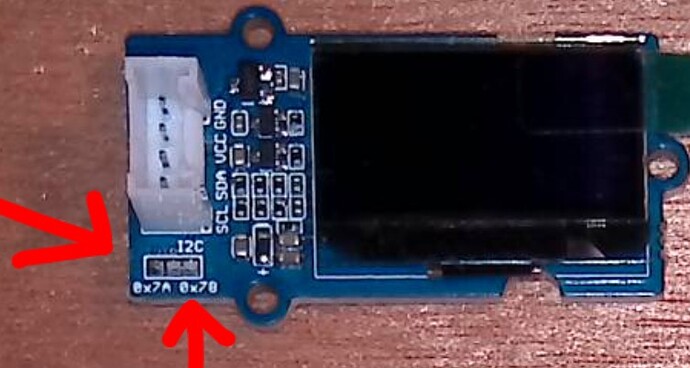Hello,
I have 2 OLED Displays (0.96" - SSD1315) that seem to have the wrong I2C address. According to the wiki and the schematic the I2C address should be 0x78 by default. However when I use an I2C scanner program the display shows up with an address of 0x3c.
Why is that? Is the documentation incorrect or am I doing something wrong.
The I2C scanner I used is on this page:
A second question I have is about setting the optional I2C address. There are 3 pads on the PC board for setting the I2C address. The center pad goes to D/C pin. Another pad is linked to ground through a 4.7k resistor. This pad has a small trace on the pc board connected to the D/C pin. The 3rd pin is tied to VCC through a 47k resistor. The schematic indicates “If the customer ties D/C# (pin 15) to VCC,
the I2C slave address will be 0x7a”.
My question is if I connect D/C to the VCC pad, do I cut the trace from the ground pad or leave it connected?
Not sure if it matters but I’m using a Seeeduino lotus board for this.
Thanks in advance for reading my post and helping me out!!
DarkStar
